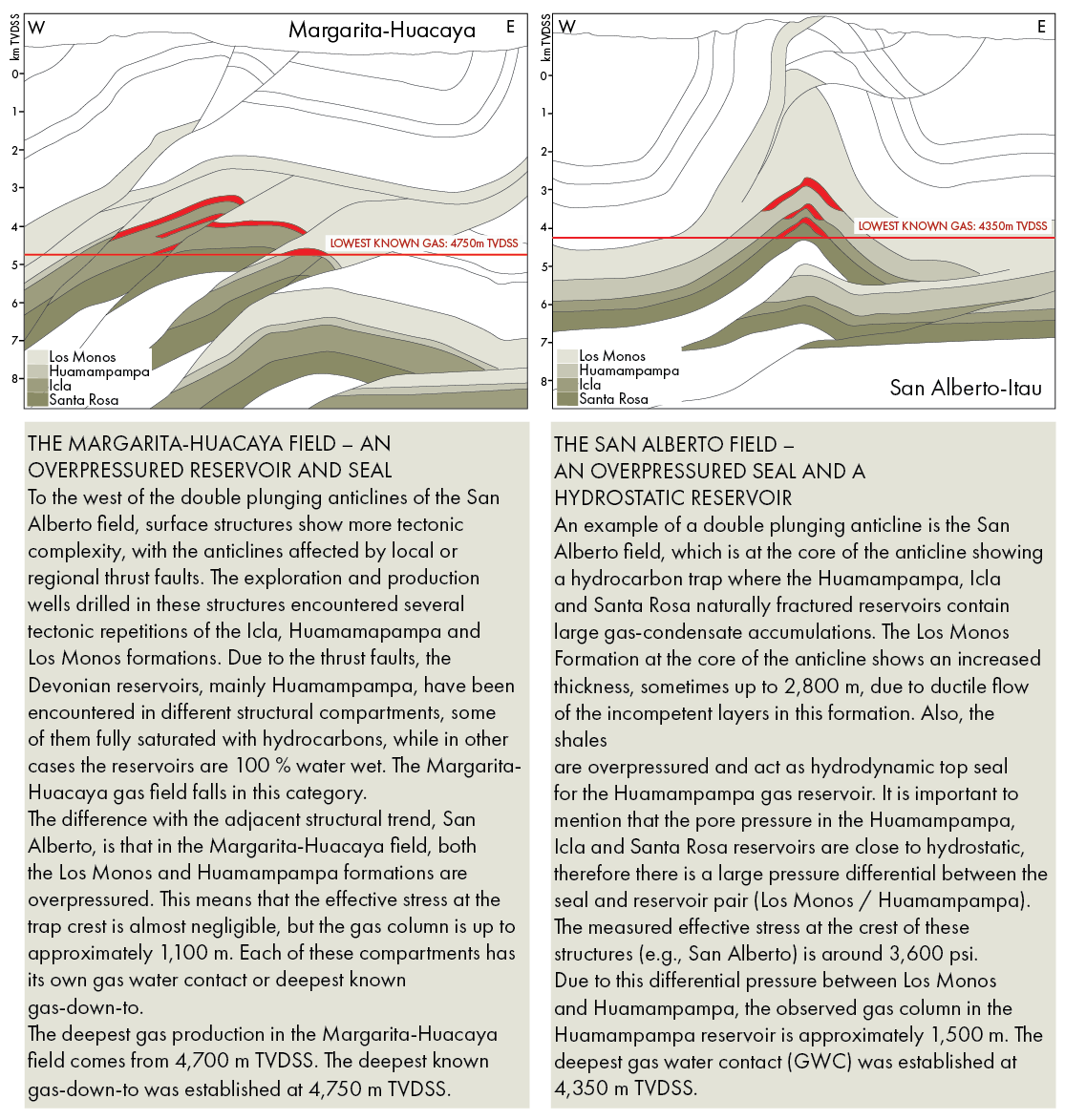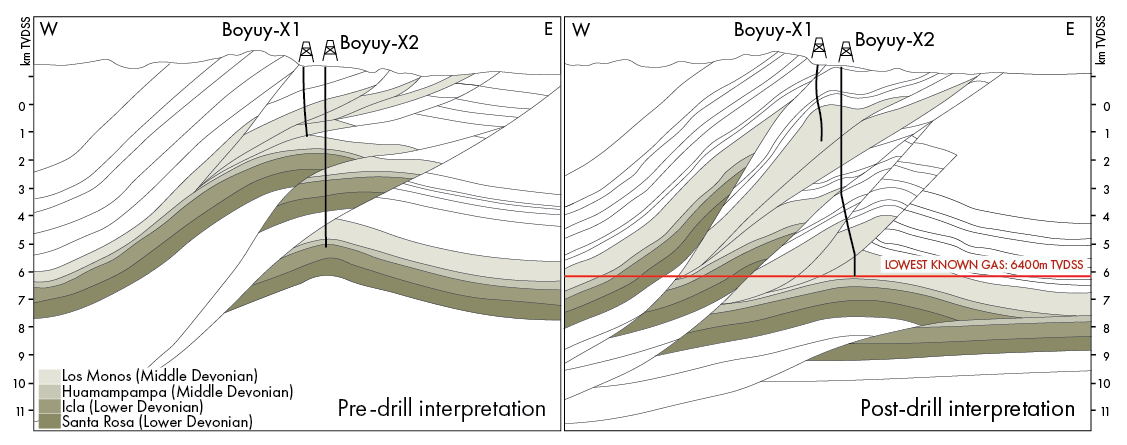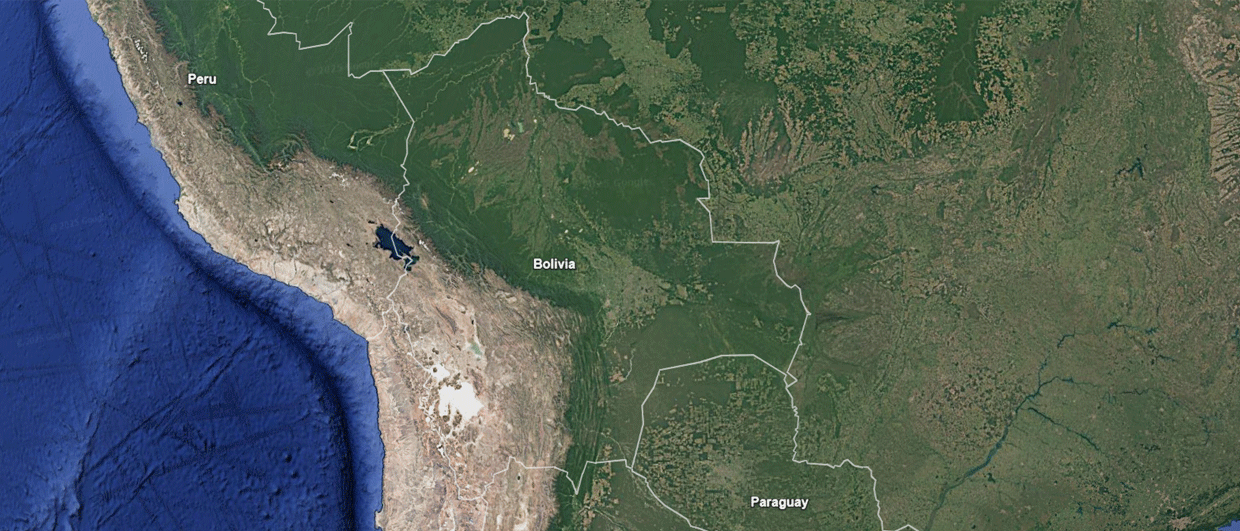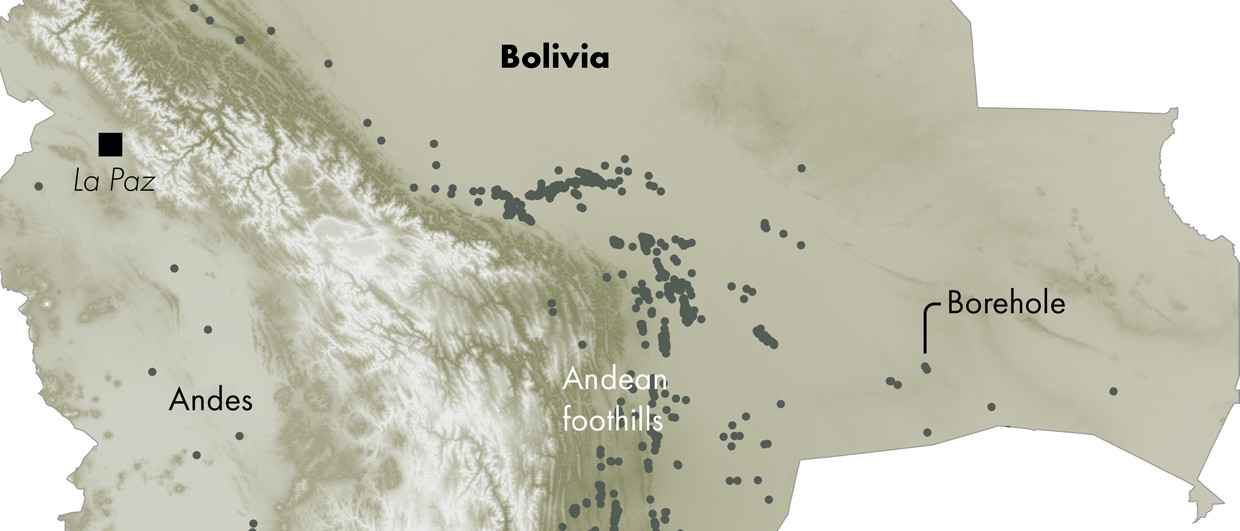
The southern Subandean fold and thrust range in Bolivia hosts multi-TCF gas fields, where production mainly comes from naturally fractured sandstones of the Lower to Middle Devonian Huamampampa Formation. But even though satellite images and surface geological maps have always facilitated prospect identification, it does not mean drilling is easy, nor has it been easy to predict the stratigraphy to be drilled.
Deep gas exploration
About ten years ago, the Caipipendi consortium (Repsol 37.5 % WI, operator; Shell 37.5 % and PAE 25 %) decided to explore to the south of the prolific Margarita-Huacaya gas field, looking for a deep gas accumulation in the overthrusted Huamampampa reservoir. The Boyuy prospect was regarded as an exploration opportunity for new gas resources in the Huamampampa reservoir in both the hanging wall and footwall blocks of the Mandiyuti fault. The targets in the hanging wall were the Huamampampa HA and Huamampampa HB reservoirs, which correspond to the proven hydrocarbon play in the Margarita-Huacaya field, while the Huamampampa HF was the target in the footwall of the Mandiyuti fault.
The well was spud in July 2017 and reached TD at 7,963 m MD in January 2019. Along the way, a few interesting observations were made. First of all, the Huamampampa HA and HB targets in the hanging wall appeared to be missed, due to a more complex structural configuration in the hanging wall block of the prospect. Then, once the well reached 6,500 m MD and did not find the footwall target either, rather than giving up, the Caipipendi consortium decided to deepen the well until 8,000 m MD.

The well finally tagged the top of the Huamampampa Formation at 7,640 m MD, at 6,211 m TVDSS, 1,365 m deeper than expected originally. Drilling into the reservoir continued until 7,963 m MD, where mechanical problems prevented going further and logging operations were initiated. By reaching this depth, the Boyuy-X2 became the first ultra-deep onshore exploration well in this basin and the wider region.
The Gas Down To (GDT) depth determined by the Boyuy-X2 well is 6,533 m TVDSS, which is now considered the deepest proven gas accumulation in the basin and 1,800 m deeper than the deepest proven gas production in Margarita-Huacaya field and 2,300 m deeper than the established GWC in the adjacent San Alberto-Itau field.
Post-well structural interpretation shows the presence of a footwall structural closure for Huamampampa. The Boyuy-X2 well is located in the axis of the northern plunge, close to a potential spill point and gas-water contact.
Even though the Boyuy-X2 well discovered significant in-place gas resources in the Lower Devonian Huamampampa reservoir, the production test showed sub-commercial gas rates attributed to a poorly developed fracture system. But still, this gas discovery opens the possibility of new exploration wells targeting this ultra-deep Devonian play in similar footwall structures and deeper reservoirs than the currently known ones.

Drilling challenges
As the well drilled by the Caipipendi consortium demonstrated, working in the Subanean requires persistence, imagination and resilience due to geological complexity. This mainly originates from an often poor seismic image quality of the cores of the anticlines, making it challenging to perform an accurate pre-drill scenario. Having drilling contingencies in place is therefore critical, because the tectonic complexity at the cores of anticlines usually ends up in changes of the stratigraphy and the related operational difficulties because of excessive drilling tool wear.
Logistical issues are also common. Because it is preferable to drill vertical exploration wells, such that a side track can still be drilled in case the target is missed, the well pads are usually located at the summit of the surface anticline. This often means that new roads have to be constructed to build the drilling pads.



